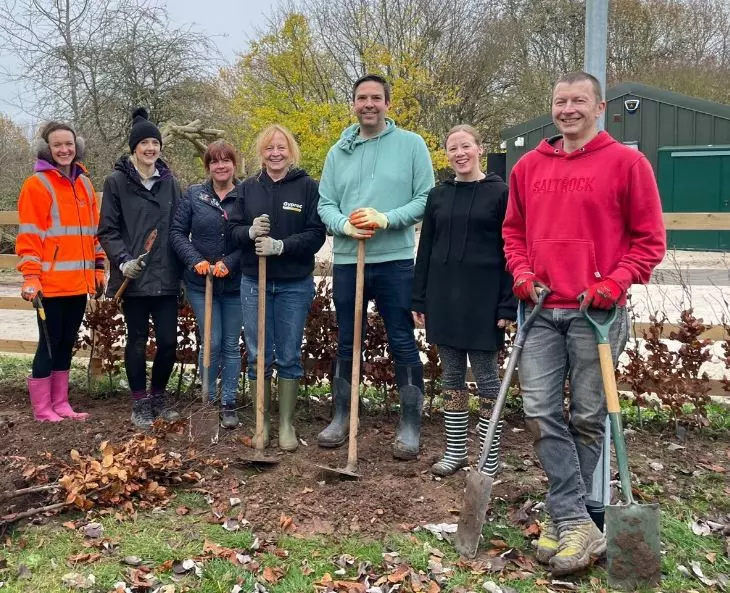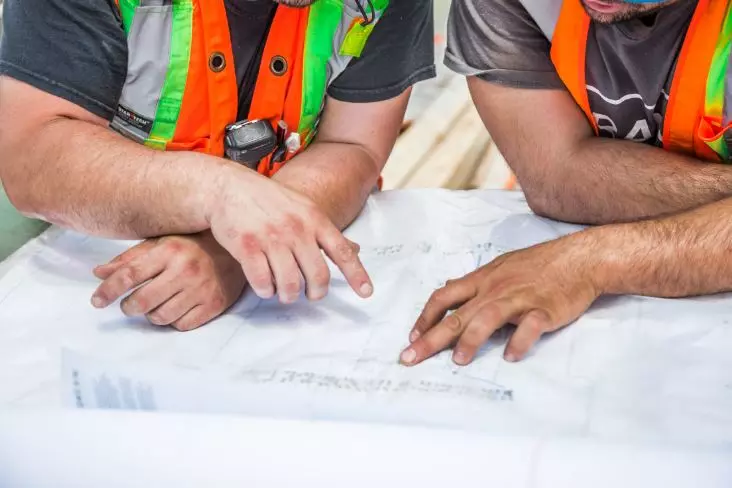Five key trends for construction in 2023

Looking back at 2022, whilst no Covid-19 restrictions were put in place and we approached the year with post-lockdown optimism, the turbulence and rippling impacts of the pandemic have remained the greatest disruptor in the sector.
Elsewhere, environmental credentials have taken a greater spotlight, and momentum behind sustainability was apparent in legislation that was introduced, including the Plastic Packaging Tax.
At Artex, we were delighted to be back at trade shows in 2022, including UK Construction Week, the National Painting and Decorating Show, and Jewson Live, which gave us a chance to spend more time in person with colleagues and customers to better understand challenges and improve supply chain collaboration.
We now look ahead to 2023, and what to expect, with five key trends we anticipate to impact the industry.
Economic uncertainty
Rising inflation and the cost of living crisis dominated conversations across the latter part of 2022, and this economic uncertainty is set to continue in 2023.
Fluctuations to material prices and energy costs will likely remain a key challenge for the construction industry, with output predicted to fall across most areas. A recent report by the Royal Institution of Chartered Surveyors (RICS) suggests that ‘a widespread slowing in momentum is clearly visible’, with increasing financial constraints and profit margins under pressure.
However, the Autumn Budget offered some signs of positivity with a commitment to spending in construction. Businesses will need to adapt and remain agile to stay ahead, offering customers greater choices and flexibility to stand out.

Green building and sustainability focus here to stay
In November 2021, the Environmental Act was passed and put sustainability and the fight against climate change at the forefront of the agenda. Containing targets for air and water quality, biodiversity and waste management, the legislation provided a roadmap for the future which we saw develop further in 2022.
This includes the Plastic Packaging Tax, which came into law on 1st April 2022. The tax impacts those who have manufactured or imported plastic packaging components which contain less than 30% of recycled plastic.
A second financial obligation, the Extended Producer Responsibility (EPR), is something the industry needs to prepare for in 2023, with DEFRA set to introduce the change in 2024. It will see retailers and merchants responsible for the cost of recovery for all ‘consumer-facing’ packaging.
This momentum behind green building and sustainability is set to gain more pace across the built environment in the next 12 months, as we edge closer towards the target of the country meeting net zero by 2050.

Modular design trends
Modular construction speeds up the building process, in comparison to traditional building methods. Another benefit of modular is the ease of installation and flexibility, as buildings/components created in this way are largely made in factory settings and assembled on-site, which can also reduce waste.
With cost and environmental challenges at the forefront of what we see ahead in 2023, modular options could be a sought out solution to help the industry respond.
However, despite the countless reasons why modular construction could help, the industry has been slow to adapt to this building method as a more standard practice over the past decade. In an article by Building Magazine, the failings in modular have been highlighted, with high upfront costs needed, and challenges for modular to meet existing building regulations.
Will modular finally take a wider grip in 2023? We certainly think it’s one to watch, with calls from trade body, Make UK Modular, for the government to spend a fifth of the affordable housing budget on modular construction.

More digitalisation
Flexible working has remained a trend throughout 2022, and it is anticipated that this will continue in 2023.
For those who work in the management or design of construction sites this has included new ways of working ranging from the use of cloud-based collaboration tools, to managing projects remotely and using technology such as drones and VR to gain a real-time view of sites from afar.
For installers and contractors, remote working is less of a viable option, however, as one example, the use of technology to speed up material ordering via merchants is becoming more widely offered and likely to become more expected in 2023.
With more and more customers visiting merchant and retailer websites for support and guidance, at Artex we offer a range of resources to support you with this, such as detailed product information, application videos and data sheets.
Digitalisation offers the industry efficiency and new ways of working, however up-skilling in certain areas will be required in order for it to become standard practice.

The growing skills gap
The skills shortages in the built environment have been widely acknowledged for many years, and will continue to place pressure on the industry in 2023.
The skills gap includes a lack of entrants joining the industry, as well as specific and new, green skills being needed to be developed by those who already have a role in construction.
During times of economic uncertainty, training and recruitment can be de-prioritised by many. The CITB CEO, Tim Balcon, in a recent statement said: “Construction employers are facing rising energy bills and materials costs and they need confidence in the future pipeline of work and support to train through challenging market conditions. We will do everything we can to support the construction industry so companies can continue to have the confidence to invest in skills".
As the lack of skills is only set to grow, focus in 2023 must be made on this across the built environment for progress to be made. At Artex we’d like to thank all of our customers for their ongoing support and business in 2022.

The trends identified above suggest we’re set for a challenging but interesting 2023 with the macro environment continuing to impact daily operations. By focusing on longer term strategy, such as sustainability and the skills gap in the industry, as well as shorter term efficiencies, construction has the opportunity to turn the corner, as often opportunities can be found in the most difficult of circumstances.